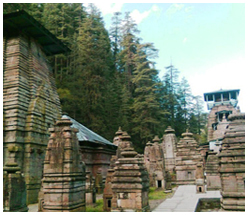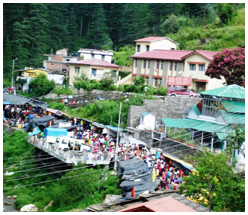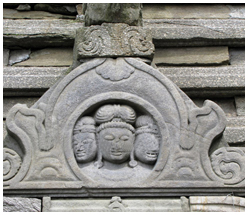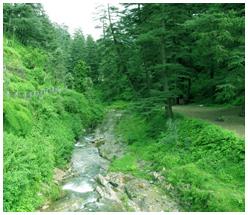
It is believed that Adi Shankaracharya visited Jageshwar and renovated and re-established many temples before leaving for Kedarnath. The temples architecture belong to the Nagara style, characterized by a tall curved spire surmounted by an amalaka (capstone) and a kalasha crown. Most of the temples enshrine a stone lingam, surrounded by stone scultptures of various deities. The pilgrimage to Jageshwar was considered as sacred as the famous chardham yatra. Before the construction of roads, pilgrims passed through Jageshwar en route to Kailash and Mansarovar. Due to the restrictions on pilgrimage to Kailash Mansarovar in the past, pilgrims were diverted towards Kedarnath; however, this center has re-attained its past glory. The temples architecture belong to the Nagara style, characterized by a tall curved spire surmounted by an amalaka (capstone) and a kalasha crown. Most of the temples enshrine a stone lingam, surrounded by stone sculptures of various deities. The pilgrimage to Jageshwar was considered as sacred as the famous chardham yatra.

History tells that during the 4th and 5th centuries AD, when the Gupta emperors held sway, the Kumaon hills were being governed by an independent dynasty of Katyuri kings. They selected this site for building temples. The temples originally constructed during the Gupta period were renovated by the rulers of the Ghand dynasty in the 7th century AD. Numerous temples were constructed or restored during the Gurjara Pratihara era and also in the 15th and 16th centuries. The Mahamrityunjaya temple seems to be the oldest of all the temples and dates back to the 8th century AD. The temples of Surya, Navagraha and Neelkantheshvara are of late Katyuri age. It is said that originally four hundred temples existed here, of which only about one hundred and eight have survived.

There are about 125 small and big temples and hundreds of stone statues. These temples are dedicated to Lord Shiva and goddess named Yogesher(Jageshwar), Navdurga, Navgraha, Lakulish, Kedareshwar, Baleshwar, Mritunjaya, Pusthi Devi, Laxmi, Kalika etc.
The main temple in the temple complex at 'Jageshwar Mahadev' is dedicated to ‘Bal Jageshwar’, or the Child Shiva. There is also a temple dedicated to Vridh Jageshwar, or Old Shiva, situated on the higher slopes. According to tradition, Lord Shiva came to meditate here, and when the women of the village came to know of this, they immediately left their household chores to have his darshan. When the men of the village heard of this, they were infuriated and came to see who is this sadhu who has captivated their woman. Seeing the commotion, Shiva took the form of a child, which is why he is still worshipped in his child form here.

This temple is situated in the south of Jageshwar. Legend has it that during the Tapasya by Lord Shiva, Demons obstruct His penance. Then God Jhanker Saim come into being as Trinetra and send His Ganas to kill the demons.

Situated slightly upstream from the Jageshwar temple complex, the Dandeshwar temple complex is in a dilapidated condition. The stone lingam is a natural rock, and, unlike the lingams of the Jageshwar complex, is not carved.

This place is 200 mts from Artola village from where temples of Jageshwar starts. It is called Mokshyadham temple. From this place Vinayak Kshetra or sacred area begins. This place lies between Jhanker Saim temple, Vrudhh jageshwar and Koteshwar temples.





